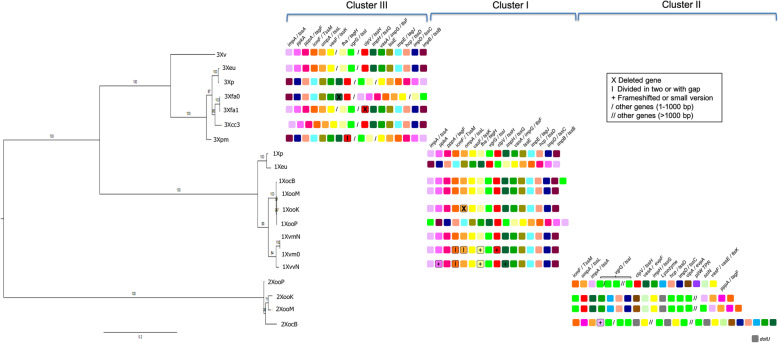Fig. 1.
Correlation between phylogeny and T6SS organization in the genus Xanthomonas. Three distinct T6SS cluster were identified in the genus Xanthomonas (see Table S5: Structural genes of type VI secretion system of Xanthomonas). The phylogenetic tree was constructed using maximum likelihood. Support values for each clade (estimated with 1000 bootstraps) are shown. The tree shows two main groups, where X. vesicatoria (3Xv), X. euvesicatoria str. 85–10 (3Xeu), X. perforans 91–118 (3Xp), X. fuscans subsp. aurantifolii str. ICPB10535 (Xfa0), X. fuscans subsp. aurantifolii str. ICPB 11122 (Xfa1), X. citri subsp. citri str. 306 (3Xcc), X. phaseoli pv. manihotis str. CIO151 (3Xpm), X. vasicola pv. musacearum str. NCPPB 4380 (XvmN), X. vasicola pv. musacearum JCVI (Xvm0) and X. vasicola pv. vasculorum str. NCPPB 702 (XvvN) are grouped together. While the type II cluster of X. oryzae pv. oryzicola str. BLS 256 (XocB), X. oryzae pv. oryzae str. PXO99 (XooP), X. oryzae pv. oryzae str. MAFF 311018 (XooM) and X. oryzae pv. oryzae str. KACC 10331 (XooK) are clustered into a second group. Core T6SS conserved genes are depicted on the right column with small squares. The color assigned to each gene was consistently used among all T6SS clusters

